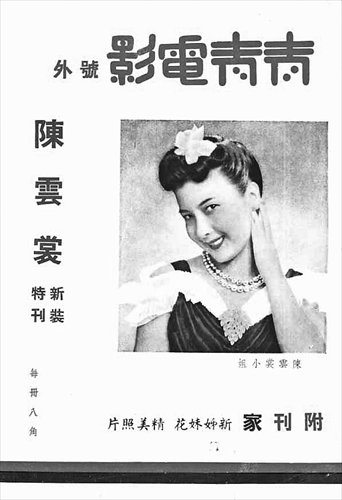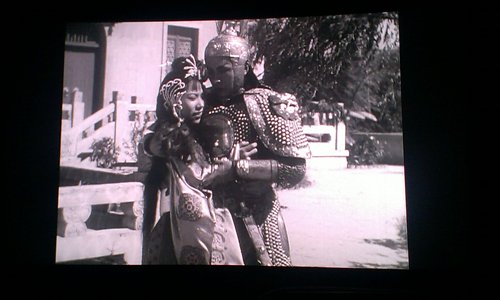Cinema under adversity
From the end of 1937 to 1941 as the war between the Japanese and Chinese raged across China, the British, American and French concession areas in Shanghai remained solitary islands, where life went on relatively calmly despite the chaos beyond them.
They also served as bastions in which the city's vibrant cinema culture could continue, both for audiences and filmmakers.

Cinema magazine Qingqing Dianying
In 1939, cinema magazine Qingqing Dianying reported how a ticket seller had sold too many tickets to a screening at Shanghai's new Huguang Cinema.
Although the cinema manager offered to let ticket holders who could not get a seat watch the next showing, people were unwilling to leave. Cinema staff were left with no choice but to bring in stools and chairs from the cinema's back offices. However, there were still not enough seats, but people still stayed, standing for the whole two-hour movie.
According to Lin Li, an expert at the Film & Television Institute of Shanghai Theatre Academy, when Japanese forces entered Shanghai at the end of 1937, most of the city's film production had already ceased as many filmmakers had fled.

Cinema magazine Qingqing Dianying
"However, the Shanghai film industry, though severely curtailed, did not stop, and unexpectedly reached an unprecedented boom during the solitary island period," Lin told the Global Times.
In the four years up to 1941, when war officially broke out between Japan and the Western forces and Japanese forces finally entered Shanghai's foreign concessions, there were more than 10 film production companies and over 40 cinemas in Shanghai. Over 200 films were produced during the period.
"The time was so prosperous for cinema development, and it's a wonder in the history of cinema," said Chen Qingsheng, a senior research fellow at Shanghai Academy of Social Sciences who has been researching the period since 1979, with a focus on film and literature.
Chen and Lin both believe that one of the main reasons for the boom in film production was that many rich businessmen from other places in China had moved into the city's foreign concessions to escape the war.

Cinema magazine Qingqing Dianying
"Their coming not only increased the cinema audience, but also brought more capital for investment in film production," Lin said. "Because of the disorder across the country, they had few other options for investment."
From 1937 to 1941, Shanghai's population reached 5 million. And in the summer of 1938, the highest amount of floating capital in the concession region of Shanghai was only 0.5 billion fabi (the paper money issued by the Kuomintang government's central bank at that time). However, from 1939 to 1941, the amount increased 2 to 3 billion fabi.
The boom was reflected not just in the number of films produced, but also in the variety of genres covered. At the same time, Hollywood blockbusters were also shown in Shanghai.

Films produced in Shanghai before 1949
"The filmmakers in the concession regions of Shanghai actively expressed their anti-Japanese sentiments by making films that used the past to allude to the present," Lin said.
Mulan Joins the Army, produced in Shanghai by Huacheng Film Company in 1939, was one such film. The story tells of a young Chinese woman, Hua Mulan, during the Northern Wei Dynasty (386-534) who disguised herself as a man in order to join the army.
"The implication being that the army is the anti-Japanese Chinese army," Lin said. "The story ends with a victory for Mulan's army."

Films produced in Shanghai before 1949, including Mulan Joins the Army Photos: Courtesy of Lin Li
Chen said that many cinema magazines which were popular in Shanghai before the Japanese invasion resumed publication in the solitary island period, including Qingqing Dianying, Star, Movie Sketch and Cinema.
However, in Chen's opinion, the boom was an unhealthy kind of prosperity. Most films were made at a rapid pace in order to capitalize on the demand, so quality slipped. "From the first day of shooting until release, a film usually only took around 10 days."
Chen added that plagiarism was also rife, particularly copying from Western films, due to the lack of supply of original scripts, while some porn was also made and given public release.